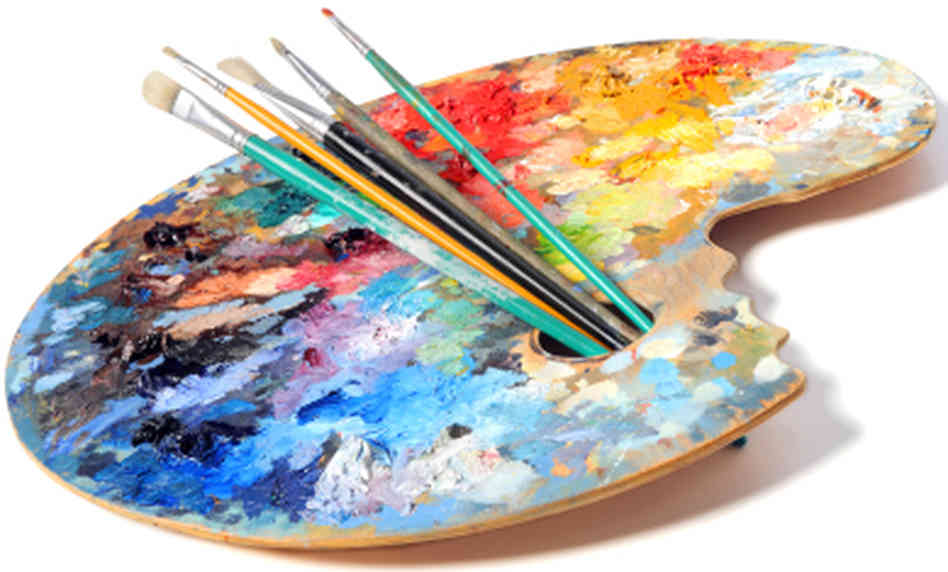The Duty of Trump Art in Shaping Social Discussions Around Management
The Duty of Trump Art in Shaping Social Discussions Around Management
Blog Article
Digging Into the Diverse World of Artistic Expression: From Surrealism to Abstract Realistic Look
In the realm of imaginative expression, from the dreamlike landscapes of surrealism to the elaborate play of light and kind in abstract realistic look, artists have constantly pressed the limits of creative thinking and creative imagination. As we explore the complex world of art, we are offered with a tapestry of styles, techniques, and philosophies that test our understanding and provoke reflection.
Surrealism: Releasing the Subconscious
Surrealism, a progressive creative movement of the 20th century, looked into the depths of the subconscious, unveiling a world of dream-like images and unusual associations. Led by musicians like Salvador Dali, René Magritte, and Joan Miró, Surrealism looked for to challenge the conventional means of seeing and understanding art. With strategies such as automatism and dream evaluation, Surrealist musicians intended to take advantage of the unconscious mind to disclose concealed realities and wishes.
Among the crucial elements of Surrealism was the emphasis on the unreasonable and the exceptional. By integrating unforeseen elements in their works, Surrealist artists intended to develop a feeling of disorientation and shock in the visitor. This interruption of reasoning and factor was meant to provoke a deeper expedition of the subconscious and the mysteries of the human subconscious.
Abstract Realism: Redefining Understanding
Challenging traditional imaginative borders, Abstract Realistic look redefines perception with the combination of recognizable components with abstract kinds. This ingenious strategy to art integrates the representational precision of realism with the imaginative freedom of abstraction, offering visitors an unique visual experience that motivates them to question their perception of truth.
In Abstract Realism, artists make every effort to capture the essence of their topics while also instilling their job with a sense of depth and complexity via abstract components. By blending the accustomed to the unfamiliar, these musicians invite target markets to involve with their pieces on multiple levels, motivating them to discover the nuances of texture, kind, and shade.

Cubism: Fragmentising Reality
Making use of fragmented perspectives and geometric types, Cubism revolutionized the imaginative representation of truth in the very early 20th century. Established by Pablo Picasso and Georges Braque, Cubism sought to challenge conventional concepts of perspective and depiction. By breaking down items and numbers into geometric shapes and providing them from numerous point of views at the same time, Cubist musicians aimed to record the essence of the subject as opposed to its literal look. This technique not only deconstructed truth however likewise highlighted the flatness of the canvas, leading the way for future abstract art activities.

Cubism can be classified into 2 main stages: Analytical Cubism, defined by monochromatic shade systems and elaborate, fragmented forms; and Synthetic Cubism, which included collection elements and brighter shades into the compositions. With these unique stages, Cubism influenced not only paint yet likewise architecture, style, and sculpture. trump art. Its impact reverberated across the art globe, motivating artists to check out new means of standing for the globe and interpreting around them
Expressionism: Emotions on Canvas
Discovering the midsts of human emotions through meaningful and vivid brushstrokes, Expressionism emerged as an extensive artistic movement in the very early 20th century. Unlike previous art activities that focused top article on showing the exterior world, Expressionism delved into the internal realm of the artist's mind, intending to stimulate raw feelings and prompt natural responses from audiences.
Expressionist musicians, such as Edvard Munch, Egon Schiele, and Emil Nolde, turned down conventional ideas of beauty and realistic look for distorting kind and color to share subjective sensations. The usage of exaggerated brushwork, strong shades, and distorted figures assisted develop a sense of anxiousness, alienation, or enthusiasm in their works.
Among one of the most popular instances of Expressionism is Munch's "The Scream," which catches the extreme stress and anxiety and anguish of modern life with its swirling, distorted number against a blood-red sky. Via their emotionally charged jobs, Expressionist artists looked for to test standard imaginative standards and offer a window right into the rough depths of the human heart.
Contemporary Art: Progressing Viewpoints

One of the defining attributes of modern art is its consistent evolution and ability to adjust to altering social landscapes. Artists are progressively including modern technology into their method, obscuring the lines in between the electronic and physical worlds. This combination of tools enables cutting-edge methods of narration and involving with audiences in a much more interactive manner.
Moreover, contemporary art often functions as a platform for social commentary, great site resolving pressing problems such as identity, politics, and the atmosphere. Artists are utilizing their work to prompt and trigger crucial discussions idea, shedding light on the intricacies of the world we reside in. As perspectives remain to progress, modern art remains a dynamic and influential pressure in forming our social landscape.
Final Thought
In conclusion, the globe of why not check here creative expression incorporates a vast array of movements and styles, each with its own unique strategy to conveying significance and emotion. From surrealism's expedition of the subconscious to abstract realistic look's redefining of understanding, and from cubism's fragmentation of truth to expressionism's portrayal of feelings, art continues to evolve and challenge point of views - trump art. Contemporary art mirrors the ever-changing world we stay in, providing brand-new ways to translate and recognize the complexities of our fact
As we explore the multifaceted world of art, we are offered with a tapestry of designs, techniques, and approaches that test our understanding and provoke consideration. Its impact resounded throughout the art world, motivating artists to explore brand-new methods of interpreting and representing the globe around them.
Report this page